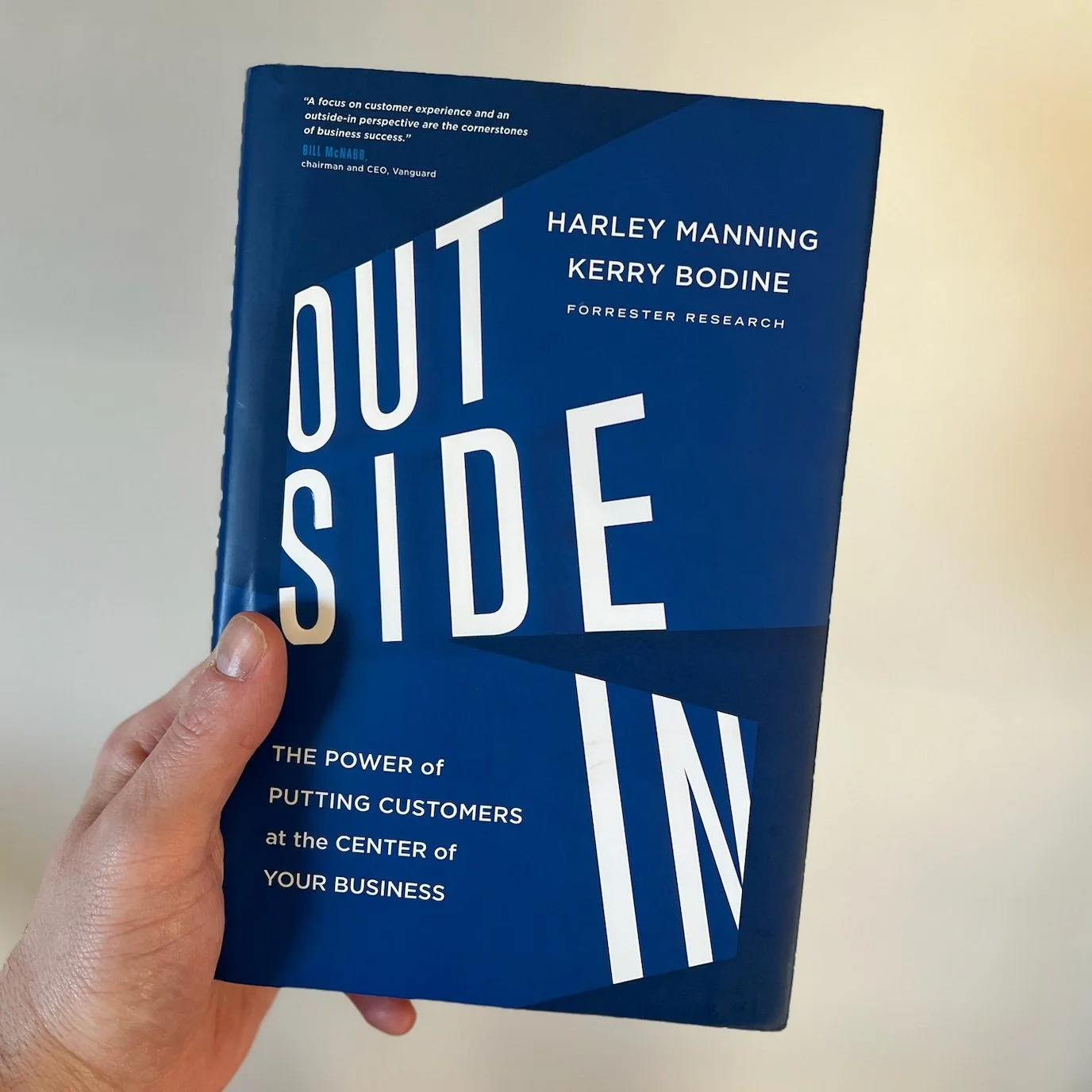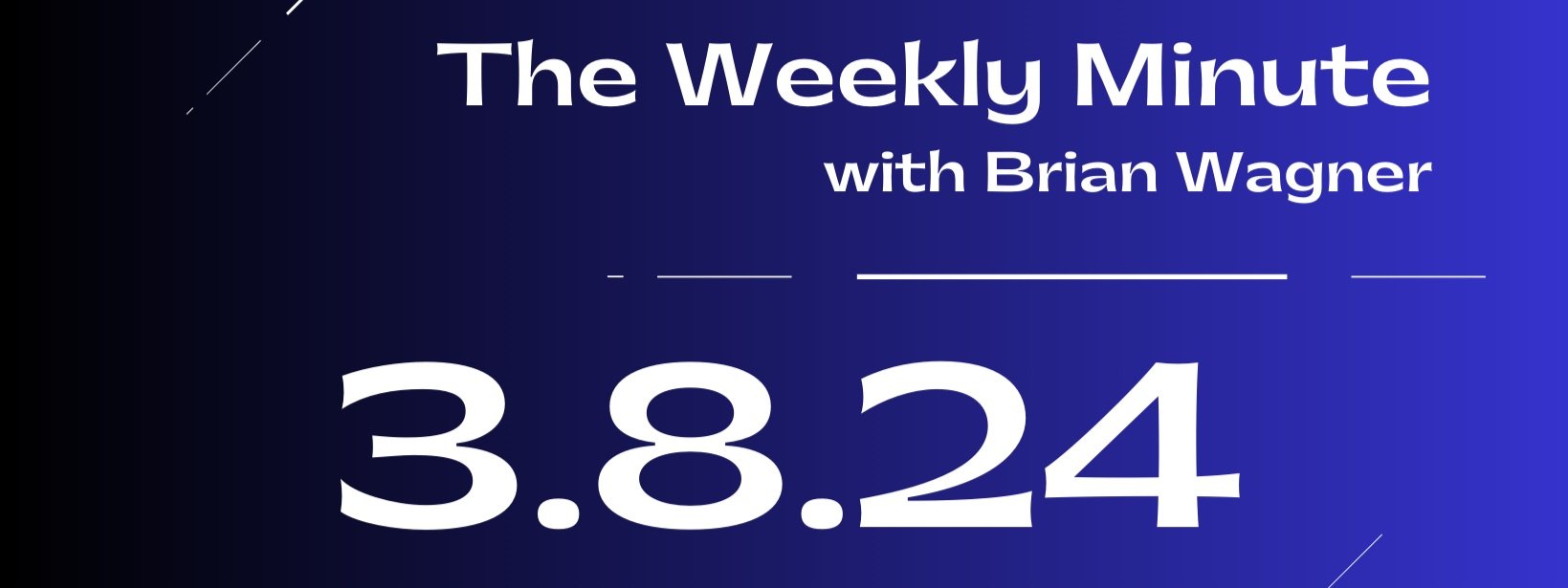Book Report - Outside In
Outside In - The Power of Putting Customers at the Center of Your Business
By: Harley Manning and Kerry Bodine
I finally finished another book! This is ‘Outside In,’ coming from the co-founders of Forrester Research. And it’s the first book off the list in 2024.
This book focuses on the power of putting customers at the center of your business. It’s broken up in three central parts [ 1) the value of customer experience, 2) ) the six disciplines of customer experience and 3) how customer experience can transform a business ]. I’ve seen that this book can really serve as a practical outline for how to create a customer-centric organization.
My Favorite Anecdotes
I will provide a bulleted list of the key learnings from the chapters, but I’ll first share a few key anecdotes shared in the book that I’d like to pull out ahead of time.
Home Depot's Customer-Centric Transformation: The book discusses Home Depot's shift towards a more customer-centric approach. In the past, Home Depot focused primarily on product availability and store operations. However, they realized the importance of improving the overall customer experience. One significant change they made was implementing a "Store of the Future" initiative, which involved redesigning stores to make them more organized and navigable for customers. This transformation led to increased customer satisfaction and loyalty.
Fidelity's Customer Journey Mapping: Fidelity recognized the need to better understand their customers' journeys in order to improve their overall experience. They embarked on a comprehensive customer journey mapping initiative, which involved gathering feedback from customers at various touchpoints in their financial journey, from researching investment options to managing their portfolios. This exercise helped Fidelity identify pain points and opportunities for improvement, enabling them to enhance their services and better meet their customers' needs.
USAA's Mobile App Innovation: USAA, a financial services company serving military members and their families, recognized the growing importance of mobile banking. They understood that their customers, who often lead mobile lifestyles due to their military service, needed convenient and accessible banking options. USAA invested heavily in developing a mobile app that provided comprehensive banking services, including check deposits, bill payments, and account management. This innovation not only improved the overall customer experience but also strengthened customer loyalty and satisfaction.
InterContinental Hotels Group (IHG) and Personalized Service: IHG prioritized delivering personalized service to its guests. They implemented a program called "IHG Rewards Club" that allowed guests to earn points for their stays and redeem them for rewards such as free nights or room upgrades. Additionally, IHG leveraged data analytics to personalize the guest experience, tailoring recommendations and offerings based on guests' preferences and past behavior. This focus on personalization helped IHG enhance customer satisfaction and loyalty, ultimately driving revenue growth.
Part 1: Understanding Customer Experience (CX)
Definition and Importance of CX:
CX is not just about tasks but building relationships and meeting customer needs.
It's about how customers perceive interactions with the company.
Impact of CX:
Correlates with customer loyalty and likelihood of returning.
CX improvement leads to savings and financial gains.
Approach to Improving CX:
Understanding customer journeys and pain points.
Using tools like ecosystem maps and the 5 Whys method to diagnose and address issues.
Part 2: The Six Disciplines of CX
Strategy:
Aligning CX with overall business strategy and brand values.
Customer Understanding:
Creating a shared understanding of customer needs and perceptions.
Using various research methods and feedback channels.
Design:
Incorporating customer, employee, and business stakeholder needs into problem-solving processes.
Actively designing CX improvements.
Measurement:
Establishing metrics to measure CX effectiveness.
Providing actionable insights to improve CX.
Governance:
Assigning responsibilities and holding people accountable for CX initiatives.
Monitoring progress and making adjustments as needed.
Culture:
Hiring customer-centric employees and fostering a culture of customer-centricity.
Reinforcing desired behaviors through training and rewards.
Part 3: How CX Transforms Companies
CX Maturity Levels:
Moving from ad hoc problem-solving to systematic adoption of CX disciplines.
Role of Chief Customer Officer (CCO):
Acts as a catalyst for implementing CX practices across the organization.
Leads change management efforts and measures results.
Actions for Improvement:
Understanding the company's purpose and customer perspectives.
Engaging with customers and frontline employees.
Mapping customer experience ecosystems and building business cases for CX projects.
My Favorite Lines I Highlighted
For most companies, CX is the single greatest predictor of whether customers will return - or defect to a competitor
CX goes to the heart of everything you do - how you conduct your business, the way your people behave when they interact with customers and each other, the value you provide
It’s not soft and fluffy
It’s not customer service
It's not usability
The simplest way to promote savings/financial gain - Find problems, fix them, and measure results.
John at T-Mobile - big hit was writing down each step of the customer journey. Began at the moment they purchased software and ended at the point where they called for help but didn’t get it
Green dot when people were happy
Red dot when people were unhappy
A CX ecosystem is the complex set of relationships among a company’s employees, partners and customers that determines the quality of all customers interaction. It’s the single most powerful framework for diagnosing and then fixing customer experience problems in ways that make the fixes stick over time
Creating a healthier ecosystem: people don't come to work thinking ‘How can I make customers unhappy today?’ – the real root cause is often more subtle. It stems from a lack of connectedness across silos, departments, and back to customers
Understanding the CX ecosystem is a necessary first step if you want to be in the game. Winning the game - by delivering a customer experience that’s superior to the one offered by your competitors – takes more
Great customer experiences don’t happen by accident. It’s the result of countless deliberate decisions made by every person on a daily basis
Ethnographic - simply observing your customers’ behavior in a natural setting... need to get away from your desk and into the field
You need to take your customer data and turn it into a compelling picture or story - something that is easy for colleagues to understand and share → Journey Maps!
Your end goal isn't the maps themselves, it’s deep customer insights which just happen to be encapsulated in these formats
Good measurement program takes the guesswork out of managing the experience
When you put all of these metrics together – the perception metrics, the descriptive metrics, and the outcome metrics – you’’ll know how the customer perceived an iteration
Good measurements:
Meets needs
Is easy
Is enjoyable
Culture - this is what your employees do when you you're not in the room
You need to overhaul your hiring practices so that you get customer-obsessed people in the door. Second you need to socialize the importance of customer centricity through storytelling, rituals and training. Third, you’ve got to reinforce new values and behaviors through informal and formal rewards.
You can’t just wave a magic wand and change behavior - that’s true. But over time, you can embed new standards for employee behavior
Training programs often start at a grassroots level - but to make a material impact on culture, you ultimately need to formalize training initiatives
Shouldn’t try to delight customers, he should just try to fix their problems as quickly as possible. Instead of bonding, let’s resolve on first call


